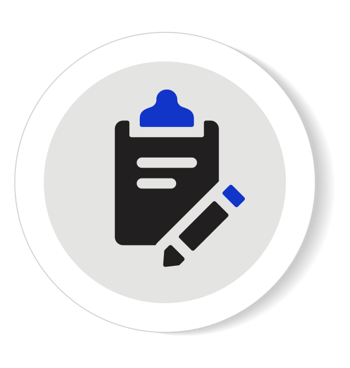TRAINING
On Demand Sessions You Don't Want to Miss

Tax Outlook: Strategic Planning for the Year Ahead
As the calendar inches toward the
year-end, don’t miss this opportunity to gear up for a crucial part of your financial plan: your tax strategy. Watch this on demand session to get the insights and action items you need to stay ahead of the curve.
In this 60-minute webinar, we covered:
- Legislative changes (and what to watch for in 2024)
- State and local updates
- Credits and incentives to consider
Critical Conversations:
A How To Webinar
Navigating difficult conversations with employees is a crucial aspect of effective management, allowing leaders to address issues that impact workplace performance or behavior before it’s too late. In this webinar, you'll learn:
- How to identify and overcome common sticking points and barriers
- A framework for finding various paths toward a solution
- Real scenarios from our HR leadership team

Corporate Transparency Act
Reporting Requirements
Beginning Jan. 1, 2024, many domestic and foreign entities must report their beneficial owners and company applicants to the Financial Crimes Enforcement Network (FinCEN).
DEEP DIVE
SECURE 2.0
With the passing of the SECURE 2.0 Act of 2022, more than 90 changes to the federal rules regarding workplace retirement plans go into effect Jan. 1, 2024. If your organization has a qualified retirement plan, it is a critical time to ensure it's in line with the new rules.
The good news?
Most of the changes are designed to benefit your organization's employees.
Catch-up Contributions as Roth Deferrals – DELAYED until 2026
Under current law, a participant eligible for the Age 50+ Catch-Up (“Catch-Up”) contribution provision under a 401(k) plan, 403(b) plan, or governmental 457(b) plan may contribute the Catch-Up amount on a pre-tax and/or Roth basis (if permitted by the plan document). Under SECURE 2.0 Act, beginning in 2024, however, if a participant’s prior year 3121(a) FICA wages from the employer sponsoring the plan exceeded $145,000, then that participant may only make a Catch-Up contribution as a Roth contribution. The $145,000 wage threshold is subject to IRS annual cost of living adjustments in $5,000 increments. The IRS granted a 2-year delay in this provision on Aug. 25.
Tax Credits for Small Plan Start Up Costs
Effective for tax years beginning after Dec. 31, 2022, the SECURE 2.0 Act provides for
extraordinary tax credits for both the administrative and contribution costs of setting up a new plan.
The current three-year start up credit is 50% of the administrative costs, up to $5,000. That percent is increased to 100% for employers with up to 50 employees, with a pro-ratable phase out for between 51 and 100 employees.
The Act adds a new credit for the costs of contributions made by employers (except for
contributions to defined benefit plans). The credit is a percent of the contributions made by the employer for the participants up to $1,000 per participant. The credit is 100% for the first 2 years, 75% in the 3rd, 50% in the 4th, 25% in the 5th, and nothing after that. An employer gets 100% of the available credit if it has up to 50 employees and the credit phases out pro-ratably up to 100 employees. The credit doesn’t apply to contributions for employees who make over $100,000 in a year (adjusted for cost of living).
The start-up credits are available to employers who set up (i) qualified retirement plans, (ii) SIMPLE IRA arrangements and (iii) SEP IRA arrangements. The credits are also available for qualifying employers who set up single-employer arrangements or who join PEPs or MEPs.
So, you will qualify for the old start up credits if your new plan began prior to 1/1/23 and for the new enhanced credits if your plan began after 12/31/22.
Long-Term Part-Time Employee Eligibility
There are both mandatory and optional provisions regarding “long-term part-time employees.” An employee who works at least 500 hours over 2 consecutive years is considered a long-term part-time employee eligible in Jan. of 2025 if the requirements are met in 2023 and 2024. The original SECURE Act has provisions for 3 years that would make an employee meeting those criteria eligible in 2024 if they had 500 hours in the fiscal years 2021, 2022 & 2023. Those employees must be given the option to make contributions to the plan.
- No employer contributions are required to be given to these participants (that is
optional). - Special rules allow plan administrators to exclude from coverage and nondiscrimination testing employees who are eligible to participate solely because of the long-term, part-time rules.
- Employees must still satisfy the plan’s age requirements.
Increase in Age for Required Minimum Distributions RMDs
Under current law, the law requires minimum distributions beginning at age 72. The Act further increases the ages as follows:
- If a person attains age 72 after Dec. 31, 2022, the new RMD beginning age is 73.
- For a person who attains age 74 after Dec. 31, 2032, the RMD beginning age will be 75.
INSIGHT
Financial Data Points to Review
Running an organization can feel like controlled chaos. Are you looking for a way to control that chaos? A great place to start is having reliable information at your fingertips. Addressing key data points can assist in creating and executing your organization’s strategy. Here are three of the top financial data points to review:
Cash Position
Cash is king, but you don’t need a lot of cash to show your organization is doing well.
Most important is knowing with clarity how your cash works for you. With today’s technology, there is no reason not to have the following information available to you at any time.
Debt Obligations
Who do you owe money to and when do you owe it? What happens if it is not paid on time – would your organization face consequences?
It is important to know payment timing and cycles, flexibility for payments, and plans to make sure you are staying current.
Revenue Tracking
Most organizations run their books monthly. Be sure you understand how much revenue you must collect to pay your expenses. Track through the month, either daily or weekly, to ensure you are on track to pay your expenses. If you need to take corrective action, make a plan. You cannot wait until the month closes to look at your revenue; if you wait until the end of the month, it is just too late.
Looking for more?
We sat down with Chris Sing, leader of Rehmann’s emerging companies practice, to explore just how critical it is for an organization to have access to real-time financial data. Watch it now on demand.
FOCUS AREA
Technology Solutions
A foundational element of any organization’s infrastructure, just like accounting and human resources, organizations must have the right technology in place to succeed.





